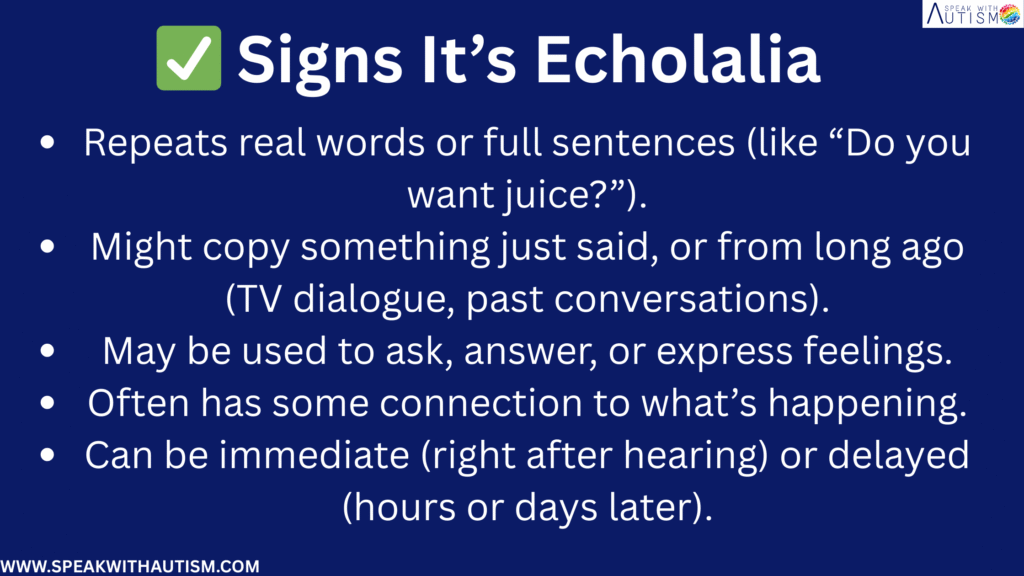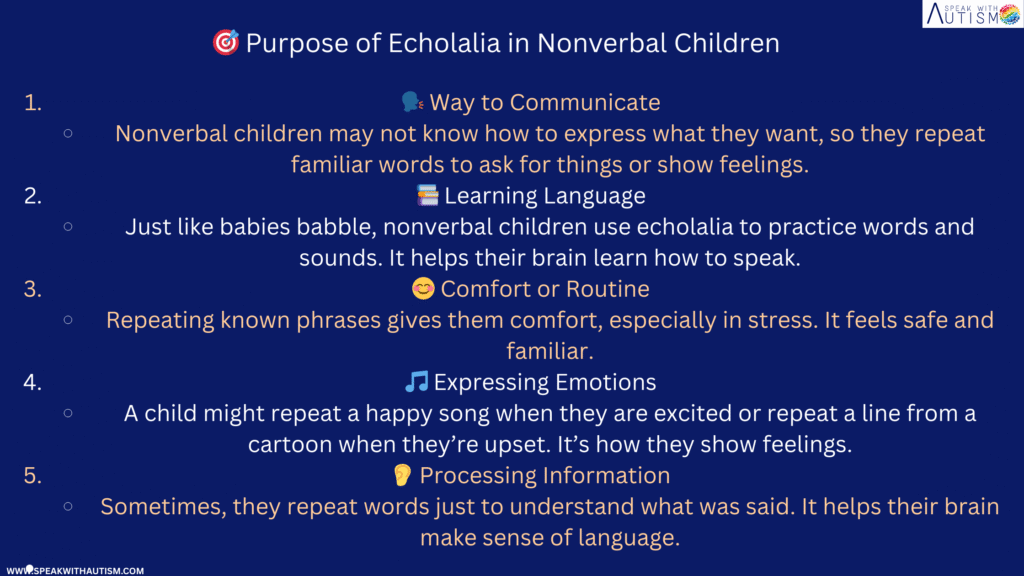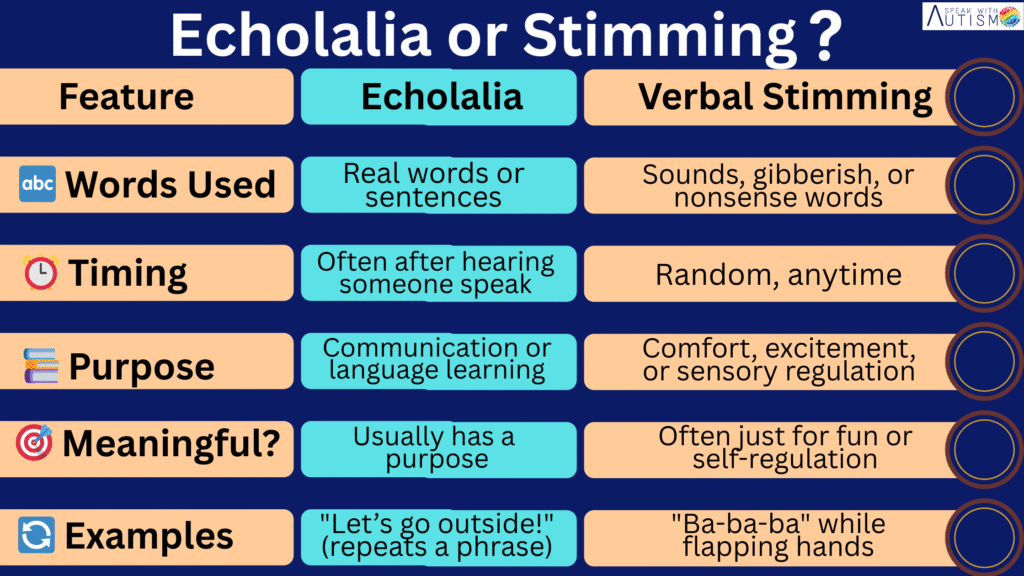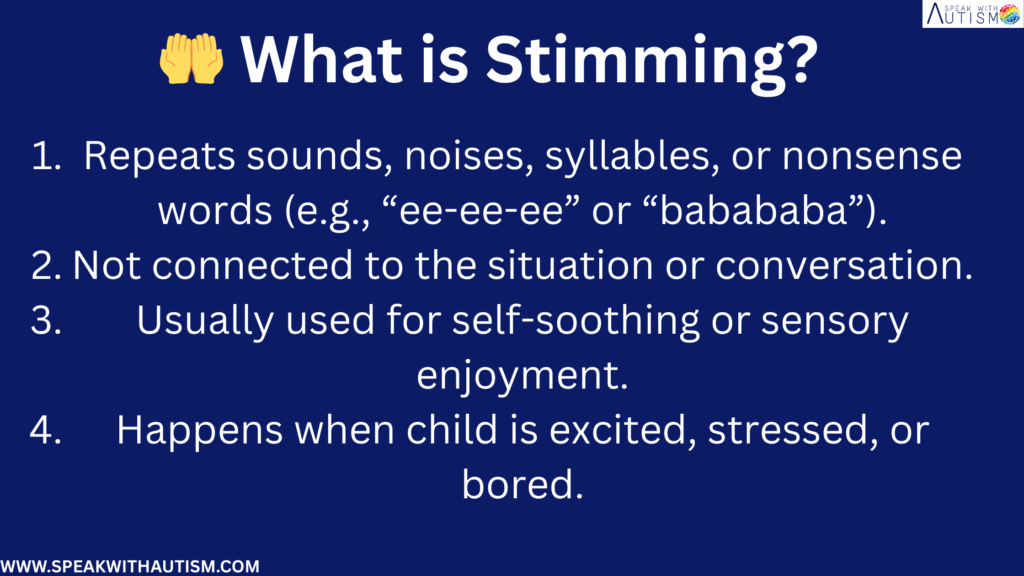Echolalia appear in nonverbal children: Although nonverbal children do not have functional speech, they may repeat certain sounds, words, or phrases. This repetition is called echolalia, and it may be a way for them to prompt or regulate another person.
Table of Contents
Echolalia appear in nonverbal children

🔹 1. Vocal echolalia
- Some nonverbal children repeat TV dialogue, songs, or lines heard over and over again in the exact tone and rhythm.
- These are often spoken without clear meaning or context, but that doesn’t mean they are unimportant.
Example: The child repeatedly says “Let’s go to the market!” when getting ready for an activity because he heard it in a cartoon.
🔹 2. Sound Echolalia (repeating sounds)
- Some children make different sounds (like humming, grunting, yaaa, ooo) repeatedly. This can also be a form of echolalia.
🔹 3. Delayed Echolalia
- The child cannot speak, but repeats some phrases from time to time, which he has heard somewhere before – like from a video or person.
🧠 Purpose of Echolalia (in nonverbal children)

- Self-regulation: When the child feels anxious, excited or overwhelmed, he calms himself by repetition.
- Emotional expression: Expresses his feelings by repeating some phrases/emotions.
- Memory recall: Recreates earlier experiences or things by repeating them.
- Attempt to communicate: Try to speak, even if the use of words is limited.
🔍 How to identify whether it is echolalia or stimming?
- If the child repeats the same word, phrase or sound in the same pattern again and again – it could be echolalia.
- If he is just making sounds or movements without words – it could be stimming behavior.

What is Stimming?
Stimming means repetitive movements or sounds that help a child feel calm, excited, or focused.

💡 What should parents do?
- Observe when and in what context the child does this repetition.
- Try to understand his need or feeling – like is he asking for something? Is he sad? Is he happy?
- Try to teach functional communication – like using PECS, gestures, or AAC devices.
🔚 Conclusion:
Nonverbal children can also show echolalia, just in a different way – often through sounds, phrases, or songs. This repetition may be a way for them to communicate, regulate, or express their emotions.
Frequently Asked Questions (FAQ’s)
Can nonverbal children have echolalia?
Yes, they can. Even if the child does not use speech regularly, he or she may still repeat certain words, phrases or sounds. This may be a form of vocal stimulation or an attempt at communication.
If a nonverbal child repeats a TV line or song over and over again, does it have echolalia?
Yes, it may be Delayed Echolalia. The child remembers and repeats things he or she has heard before, such as advertisements, songs or dialogues, often without context.
If the child does not speak words but makes sounds (like humming, grunting) repeatedly, is it echolalia?
If the sounds are mimicry of something heard, then yes, it could be echolalia. But if they are random and self-soothing in nature, then it could also be vocal stimming. Observation is important to understand the difference.
What does echolalia mean for nonverbal children?
It can be a way for them to:
show their emotions
get attention
regulate themselves
“Practice” their words
Should echolalia be stopped?
No, unless it is harmful to the child or others, it is better to redirect echolalia rather than stop it. It can be used to teach the child functional communication.
How can echolalia be transformed into useful communication for nonverbal children?
Some ways:
Visual supports (such as PECS)
AAC devices
Teaching simple phrases (such as “I want”, “More”, “Help”)
Speech or ABA therapy
How do you know if your child is having echolalia or just making sounds for fun?
Pay attention to whether the sounds:
match something you’ve heard?
come at specific times (such as stress or happiness)?
If so, it may be echolalia. Otherwise, it could just be vocal stimming.
Does echolalia always occur in autistic children?
No, but it is a common symptom in autism spectrum disorder, especially in children with developmental language delays. It is not present in every autistic child.
